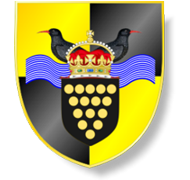VHF Radio
 Marine communications have been revolutionised by the introduction of the Global Maritime Distress and Safety System (GMDSS). Designed by the International Maritime Organisation and supported by the International Telecommunication Union, It Ensures that vessels anywhere in the world can communicate with an onshore Rescue Co-ordination Center by two independent means without the need for a specialist radio operator.
Marine communications have been revolutionised by the introduction of the Global Maritime Distress and Safety System (GMDSS). Designed by the International Maritime Organisation and supported by the International Telecommunication Union, It Ensures that vessels anywhere in the world can communicate with an onshore Rescue Co-ordination Center by two independent means without the need for a specialist radio operator.
Yachts and small craft are not bound to carry radio transmitters and receivers and are under no obligation to participate in GMDSS. However any small craft skipper who wants to communicate with other vessels or shore bases, needs to keep up with the advances in maritime communications.
Some elements of pre-GMDSS communications will still continue to be available, however it will become important for skippers of small craft to participate in GMDSS if they want to be able to send a fast effective distress message. Mobile phones have come along way and are effective in inshore situations although they do not have the ability to join an open network or receive and transmit broadcast messages. The strength of maritime VHF is the ability to provide discrete ship to ship or shore communication and to broadcast messages.
With users running into hundreds of thousands sharing just 59 international channels there have to be procedures and rules which everyone understands and abides by, they don’t have to be rigidly followed but if totally ignored communications would be impossible.
If we use VHF maritime radiotelephony correctly we can enhance our own safety and that of others.
